We occasionally link to goods offered by vendors to help the reader find relevant products. Some of these may be affiliate based, meaning we earn small commissions (at no additional cost to you) if items are purchased. Here is more about what we do.
Don’t worry, you’re not alone. Confusion about the difference between canola and rapeseed oil is a totally common occurrence.
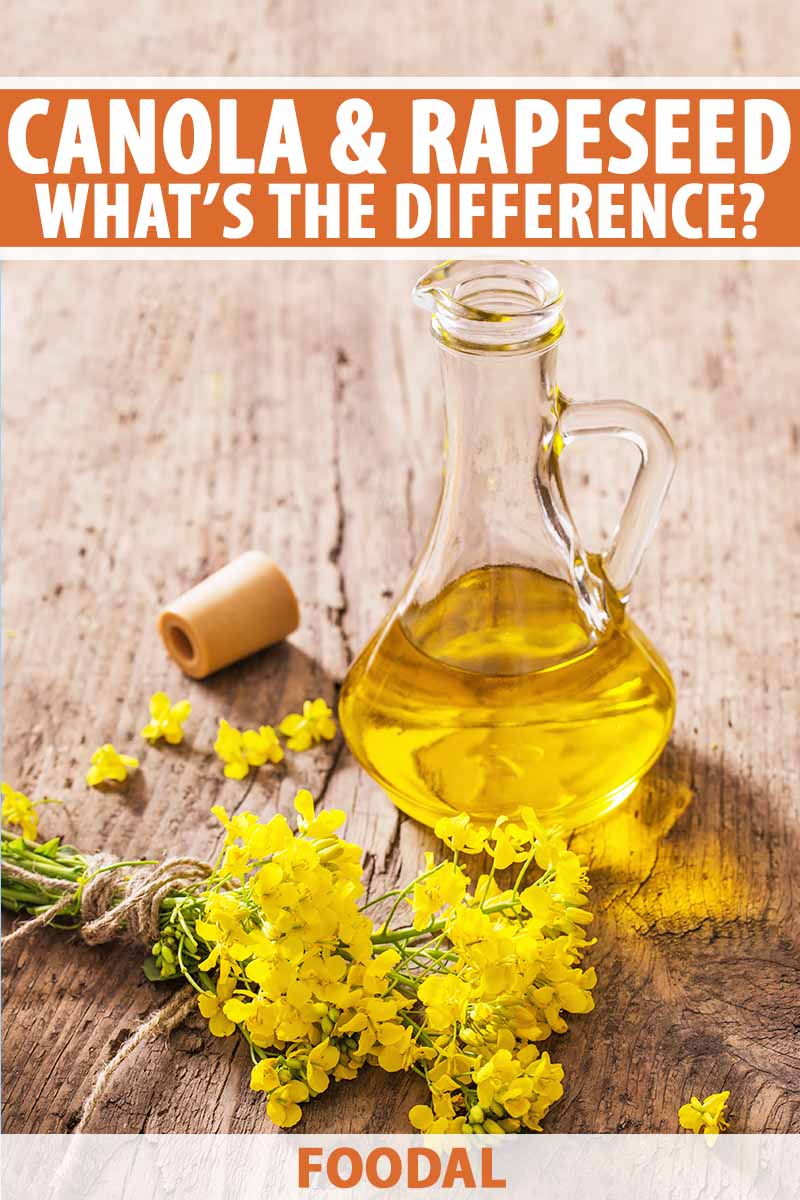
How could it not be?
In some countries, the term “rapeseed” refers to inedible industrial oil, while in others, it’s used interchangeably with canola.
Um, is it just me, or does that sound like a slip-up you certainly don’t want to make when dropping your hushpuppies into the fryer?
Canola is my personal go-to for sauteing after olive oil, which I call on for its fruity flavor. When I learned how common it was to confuse canola with other types of rapeseed oil, I was determined to discover what separates the two.
In this article, we’ll run through the factors that make them different, as well as the characteristics that they share. Here’s a rundown of everything you’ll find up ahead:
What’s the Difference Between Canola and Rapeseed Oil?
Before we go any further, I’d like to quickly point out that I didn’t accidentally leave the “g” off of grapeseed throughout this article. Rapeseed and grapeseed are, in fact, two different things. Learn more about grapeseed oil here.
All of the above being said, this can be a puzzling topic – particularly when you’re trying to land on the perfect neutral fat that’s liquid at room temperature for your next culinary expedition.
Origins
It’s usually good to start at the beginning of a story, so once upon a time, there was a plant genus called Brassica.
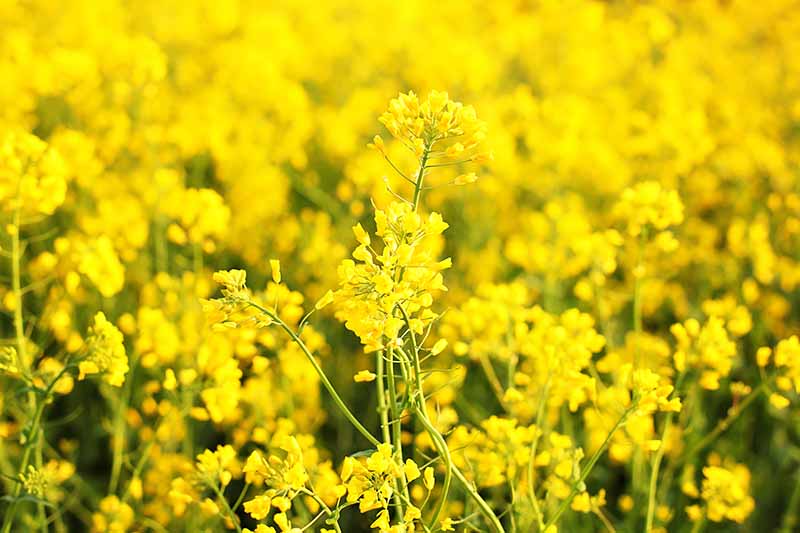
It was made up of various members including kale, broccoli, cabbage and mustard. Among them was a subspecies of Brassica napus known as oleifera, whose seeds were rich with oil. “Oleifera” means oil-bearing, and the plant came to be known commonly as rapeseed, aka rape or oilseed rape.
Okay, before fairy godmothers and shiny shoes are thrown into the mix, let’s get to the point. Both canola and rapeseed are members of this subspecies, and one is in fact a specific cultivar of the other.
Yes, canola is simply a specific type of rapeseed. Here’s how that happened.
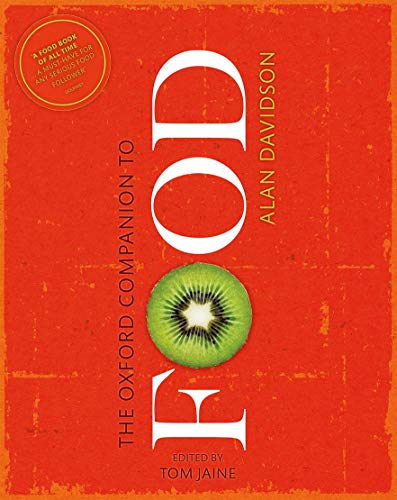
The Oxford Companion to Food, available on Amazon.
According to “The Oxford Companion to Food,” B. napus is one of the most ancient (and useful) members of the cabbage tribe, with members of the subspecies oleifera being particularly notable.
Though known historically for its use in industrial applications as well as cooking, rapeseed wasn’t suitable for full membership in the culinary world to begin with. Besides having a strong and generally off-putting taste and smell, it contained significant quantities of two potentially harmful compounds – erucic acid and glucosinolates, which we’ll come back to shortly – that render it inedible when these are found in high concentrations.
In 1979, a new cultivar known as ‘Canola’ was born from rapeseed through traditional plant hybridization, enabling home cooks to safely reach for it in the kitchen. This cultivar was developed in Canada and touted for its composition of less than 2% erucic acid and low levels of glucosinolates.

Why Do Donuts Have Holes?, available on Amazon
Don Vorhees, author of “Why Do Donuts Have Holes?: Fascinating Facts About What We Eat And Drink,” states that the name “canola” actually comes from a series of words: Can(ada) + o(il) + l(ow) + a(cid).
If you’re hungry for more food facts, you can grab your own copy of this book on Amazon.
I think we can all agree that “canola” rolls off the tongue far more elegantly than “low-acid Canadian rapeseed oil.”
Most canola crops grown today have been genetically engineered to tolerate herbicides. And in comparison to something like cultivating an olive orchard, it’s far less expensive to produce and harvest.
Properties and Composition
Now that we’re clear on the fact that canola and rapeseed oil are essentially one and the same with some minor variations, both originating from the same plant with varying degrees of suitability for use in the kitchen, let’s look a little deeper into the unique qualities of each.
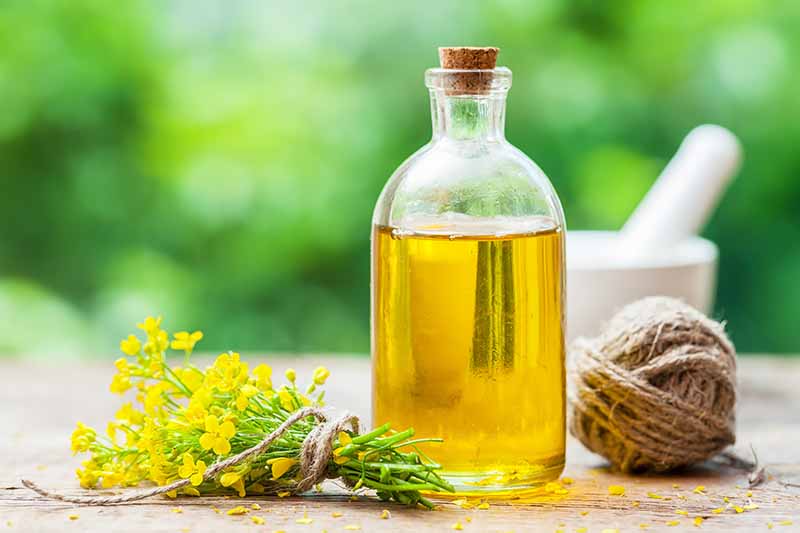
Just because canola is a more palatable variety of rapeseed oil, that doesn’t mean all cultivated varieties of rape from which oil is derived are edible. It’s just like that old saying about all bourbon being whiskey, but not all whiskey being bourbon… the specifics are important here.
If you’re shopping, be on the lookout for culinary rapeseed oil, aka canola. Industrial rapeseed oil or any variety not labeled specifically for culinary use should not be considered a grocery item.
To be labeled “canola,” a seed that’s processed with kitchen use in mind must contain less than 30 micromoles of glucosinolates and less than 2% of erucic acid. It all comes back to those two components, and here’s a little more about what those are, as promised.
All edible fats contain different types of fatty acids, and erucic acid is a monounsaturated variety. This compound occurs naturally in oil-rich seeds from the mustard family, and the quantity can range from 30 to 60% of the total fatty acids of natural rapeseed and mustard seeds.
Studies in animals have indicated that consuming high amounts of erucic acid may have the potential to negatively impact heart health in humans.

Glucosinolates, also known as mustard oil glycosides, are sulfur-containing chemicals which are also naturally found in plants from the mustard and cabbage family.
When the plant is chewed or cut, these act as a deterrent, releasing a pungent, bitter flavor. These chemicals can serve to protect plants against bacterial and fungal pathogens, as well as hungry insects and animals.
Canola oil only contains these chemicals in low concentrations, and it can be used safely in cooking and consumed as part of a healthy diet. It contains plenty of healthy fats and fat-soluble vitamins like vitamin E, which supports skin and eye health.
Though rare, some individuals are allergic to canola. Not considered one of the major food allergens in the US – a group that includes milk, eggs, fish, crustaceans, tree nuts, peanuts, wheat, and soybeans – individuals with sensitivities should be careful to read food labels if this may be a concern.

On Food and Cooking, available on Amazon
According to Harold McGee, author of “On Food and Cooking: The Science and Lore of the Kitchen,” canola also has less saturated fat than most other types of oil at 7% of the total fatty acid content, and more monounsaturated and polyunsaturated fatty acids.
Snag yourself a copy of McGee’s book on Amazon for more food science wisdom.
When, Where, and How to Use Canola Oil
The industrial variety of rapeseed oil is used in the automotive and chemical industries, but you definitely do not want to turn to it for sweating onions.
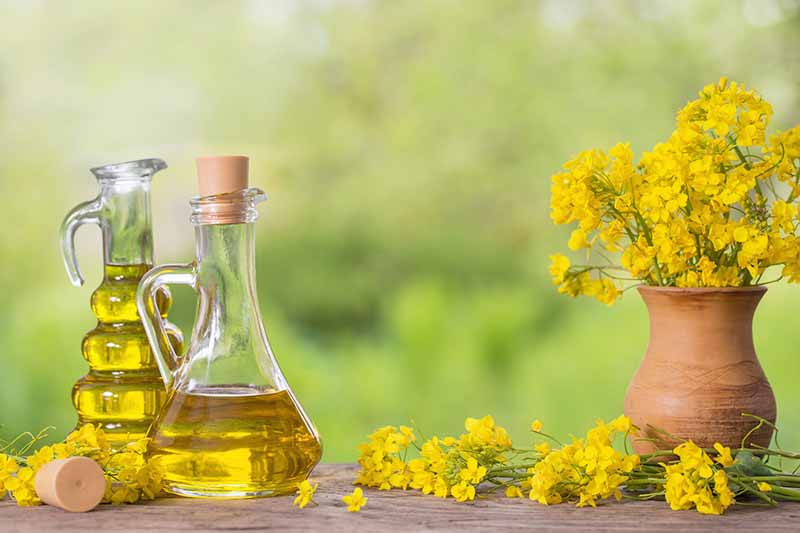
Culinary rapeseed oil of the canola variety, however, is totally acceptable when you’re in the mood to saute. Though this is more common in the UK, you may spot it labeled as “rapeseed” or “colza” on grocery store shelves.
While most of what you’ll find is highly processed, you may be able to snag a bottle of the cold-pressed variety. This type will have a stronger flavor, and a more yellow color.
Note that being particularly low in saturated fat also means canola will go rancid quickly when it’s exposed to light and heat – sometimes before you even bring it home. Always be sure to store yours in a cool, dark place like a cabinet that’s located well away from your stove, avoid buying in bulk, and try to use it up fast after opening.

Canola is a solid choice for crisping up classic fried chicken since it has a high smoke point, around 400°F, and it doesn’t impart a strong flavor like other types of rapeseed.
You can whisk this light, neutral option directly into a vinaigrette, for a delicate emulsion to dress your salads.
And thanks to its mildness and ability to easily blend into batters, it doesn’t overwhelm baked goods, so it’s perfect for making waffles and desserts.
In addition to using it in cooking at home, canola is commonly found in many packaged foods.
Choose Wisely to Avoid a Slippery Slope
In cooking, some folks reach for whatever golden liquid is nearby when preparing to fry, bake, sear, or dress – but it’s helpful to be familiar with the qualities of each option. In this case, canola cuts the mustard.

Now that you’ve gotten the run-down on what separates these plant-based fats, you should have a clearer picture of why they’re often confused, and how they can differ from each other.
How do you feature canola in your cooking? Is it an ingredient that you reach for often? Share your tips and questions in the comments below.
And if you’re in the mood to compare more culinary staples, these guides will feed your need for knowledge:
- Ice Cream vs. Gelato: What’s the Difference?
- Jam, Jelly, or Preserves? A Quick Guide to Spreadable Fruit
- Grits vs. Polenta: What’s the Difference?
© Ask the Experts, LLC. ALL RIGHTS RESERVED. See our TOS for more details. Uncredited photos: Shutterstock. With additional writing and editing by Allison Sidhu.
About Fanny Slater
Fanny Slater is a home-taught food enthusiast based in Wilmington, North Carolina who won the “Rachael Ray Show” Great American Cookbook Competition in 2014, and published her cookbook “Orange, Lavender & Figs” in 2016. Fanny is a food and beverage writer, recipe developer, and social media influencer. She was a co-host on the Food Network series “Kitchen Sink,” was featured on Cooking Channel’s longtime popular series “The Best Thing I Ever Ate,” and continues to appear regularly on the “Rachael Ray Show.”

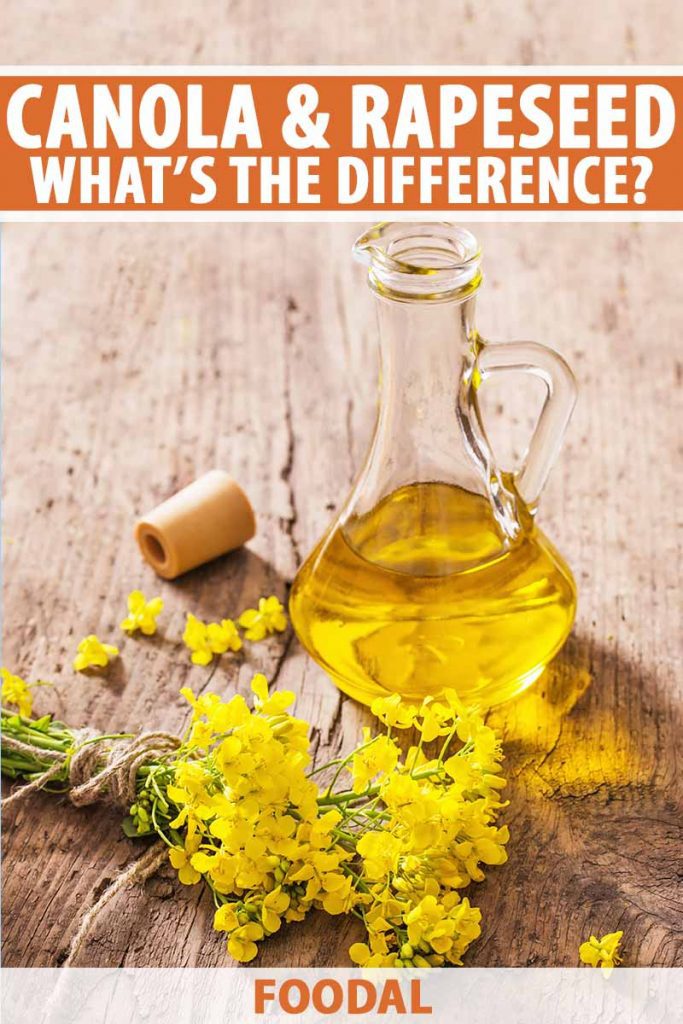



Canola is to be AVOIDED. It’s GENETICALLY MODIFIED. Big no-no.
You are correct, the majority of the canola grown in North America today is genetically modified, particularly in Canada. To avoid it, consumers can look for the butterfly symbol of the Non-GMO Project on the label. Read more here.
A wonderfully written article. Thanks!
I learned something thanks.
I have read up on canola oil & found the mother plant is highly toxic to humans so they highbread it with another plant & FDA said that low level of toxin is ok for us. But have you read the ingredients in all your chips & food??? It’s in everything! So how much toxin are we really getting?? I have a lot of food sensitivities & if I eat anything with canola oil I will get diarrhea!! I have found avocado oil is good & has a high heat point & also cooking olive oil has a higher heat point than regular olive oil.
I’m also extremely sensitive to sucralose. Again the same thing with the FDA, a little is ok for you but it’s in so much these days, how much is ok for a person??